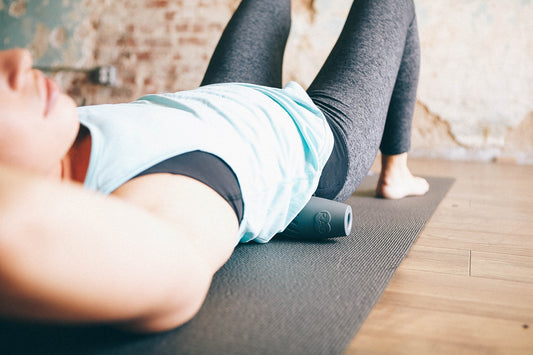How often should you foam roll?
We wish we could give you an easy answer, but the truth is, It totally depends on your body and your overall health.
We get this question a lot. Like everything in health and wellness, it depends on the general state of your body and where you’re starting. We’ll break it up into a few categories based on where you’re at in your fitness journey.
Taking your first steps?
If you’re just starting on a workout program, haven’t used a foam roller before, and don’t have a current mobility routine, here’s where to start.
First things first, if you don’t stretch or mobilize regularly, there are probably some areas in your body to unwind, and the best place to start is at the spine. You can take a look at our article ‘How To Start Foam Rolling’, but plan to spend 10-30 minutes a day. If you’re already watching a bit of TV at night, use that time to get some mobility back into your spine. If you’re pressed for time, spend ten minutes on a helix or axle taking care of the spine, and large muscle groups and areas, quads, calves, and neck.
If you’re just starting an exercise program, dealing with soreness can keep your body feeling great as you build up strength. Spend 5-10 minutes with the Rod or Axle flushing out areas you worked on at the gym. You’ll feel much more readying fresh for that ongoing exercise program.
Besides all this, creating the habit of taking care of your body for 10 minutes a day will vastly improve how you feel.
Minimum 10 minutes per day.
Weekend Warrior?
You’ve rolled before. You’re still competitive, but you’ve got a day job. We get it. You probably don’t need to be rolling everyday, but it’s best to inject some light sessions into your routine 4-5 days a week. Maybe it’s corrective, or maybe it’s recovery, but if you know your body you’ll be able to target right where you need to go. 10 minutes, 4-5 days a week will keep you at an optimum level for maintenance and recovery.
10 minutes a day, 4-5 times per week.
Seasoned Pro?
You’re mobile, your routine’s dialed, and your schedule’s already set. The seasoned pro generally needs to put out fires, and think about the offseason. Doing corrective work in the offseason can be a huge help to your current body mechanics, and your life-after-sport. Take cycling for example….You’re bent over a frame all day, and you’re body is well used to being that way. Getting extension back into the spine can do wonders for longevity both in the season and outside of it. Schedule your corrective work offseason, and light recovery work in season.
30 minutes a day off season, 10 minutes in season.



















